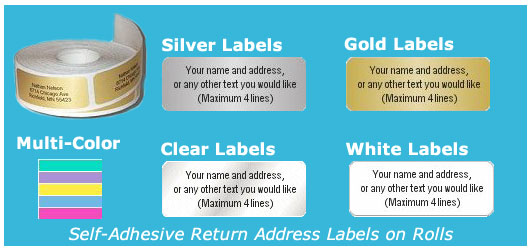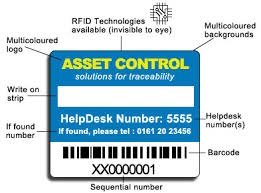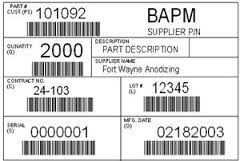


What are Asset Tags?
There are many different names for
Asset Tags. Essentially, they are labels that are affixed to business property. Often these labels have bar codes on them, serial numbers, model numbers, etc.
Here is a list of terms related to
Asset Tags:
Radio-frequency identification tags (RFID) are the wireless non-contact use of radio-frequency electromagnetic fields to transfer data, for the purposes of automatically identifying and tracking tags attached to objects.
Click here if you would like to purchase
Asset Tags. If you have your art already finished and want to upload your file, here is a link to our
custom asset tags page. Or click here to order using one of our
asset tag templates.
| rfid tags |
RFID labels are capable of receiving, storing and transmitting digital information in multiple frequencies for global supply chain support. |
| bar code |
A barcode is an optical machine-readable representation of data relating to the object to which it is attached. Universal Product Code. UPC bar codes were originally created to help grocery stores speed up the checkout process and keep better track of inventory, but the system quickly spread to all other retail products because it was so successful. A bar code is machine-readable. A 12-digit UPC number is th human-readable number associated with the bar code. |
| inventory control |
Modern inventory control systems often rely upon barcodes and radio-frequency identification (RFID) tags to provide automatic identification of inventory objects. |
| asset tags |
An individual code assigned to a system, usually by an administrator, for security or tracking purposes. |
| barcode labels |
A series of lines of varying width, printed, as on a container orproduct, that can be read by an optical scanner to determinecharges for purchases, destinations for letters, etc. Also called: UPC a machine-readable arrangement of numbers and parallel lines of different widths printed on a package, which can be electronically scanned at a checkout to register the price of the goods and to activate computer stock-checking and reordering |
| asset tracking |
Asset tracking refers to tracking the movement of physical assets, either by scanning barcode tags attached to the assets or by using smart tags, like 'passive' RFID, which broadcast their location, but which have limited transmission range (typically a few meters). Longer-range "smart tags" use 'active' RFID -where a radio transmitter is powered by a battery and can transmit up to 2000 meters (6,600 feet) in optimum conditions. |
security seals
|
Security seals are mechanisms used to seal containers in a way that provides tamper evidence and some level ofsecurity. Such seals can help to detect theft or contamination, either accidental or deliberate. |
| tamper evident labels |
Tamper-Evident Polyester Asset Labels are appropriate where security is top priority. If someone tries to detach it, a mark is left behind on the asset’s surface. |
asset management system
|
Asset management, broadly defined, refers to any system that monitors and maintains things of value to an entity or group. It may apply to both tangible assets such as buildings and to intangible concepts such as intellectual property and goodwill. Asset management is a systematic process of operating, maintaining, upgrading, and disposing of assets cost-effectively. |
| property ID labels |
Another name for Asset Tags |